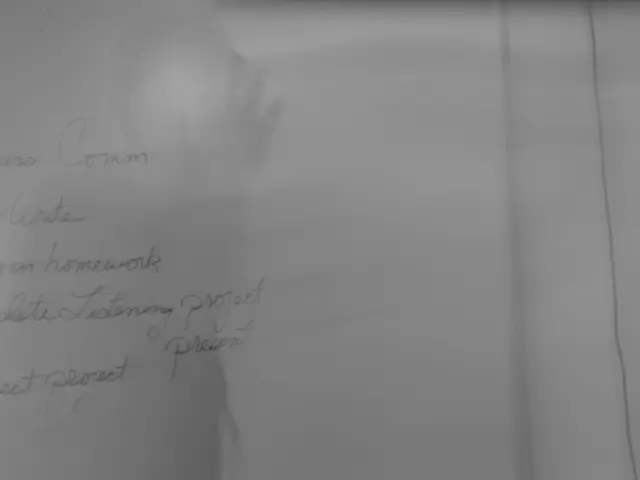Charting a Neutral Course Towards a More Robust America Through Technological Development
Industry, the backbone of our economy, encompassing everything from steel to chemicals, is a vital component of U.S. prosperity. Securing domestic industrial resilience is pivotal for safeguarding supply chains, ensuring access to crucial materials, and keeping manufacturing costs competitive. This, in turn, bolsters economic growth and national security.
Embracing technological innovation in the industrial sector can serve as a bipartisan solution to both challenges. The U.S. Department of Energy (DOE) recently released its maiden report through the Industrial Technology Innovation Advisory Committee (ITIAC), recommending strategies for the DOE to spur advanced manufacturing, creating high-quality jobs while slashing air pollution and bolstering industrial competitiveness and technological leadership.
However, the future of ITIAC hangs in the balance. Following the change in administration, the committee's webpage was removed, and DOE staff were restricted from collaborating with the committee. ITIAC is an unpaid, nonpartisan body that aids the DOE in strategically directing resources to advance a thriving American industrial sector, with support from industrial firms, labor groups, NGOs, and state governments.
As Vice Chair of ITIAC, I observed a broad consensus on various solutions, all championed by representatives from different parties. Diving into the existing DOE programs that support U.S. industrial competitiveness revealed numerous opportunities for expansion or extension. Many of the committee's recommendations leveraged these existing programs, underscoring the DOE's crucial role in bolstering U.S. industrial competitiveness.
The U.S. is teetering on the brink of an industrial renaissance, and ITIAC's preliminary recommendations focus on actions the DOE should pursue to realize a secure and prosperous future. Simultaneously, policymakers in the 119th Congress and the new administration must recognize the DOE's pivotal role in fostering U.S. industry and the necessity of supporting the committee's nonpartisan work.
Fostering the American Industrial Future: Five Key Steps

Overarching DOE Strategy and Budget
- Identify priority DOE offices for budget increases, focusing on energy use, national security, employment, and industrial competitiveness impacts.
- Develop guidelines for technology and program prioritization, taking into account energy use, national security, employment, and industrial competitiveness impacts.
- Streamline how companies respond to funding opportunities and implement projects by improving data sharing and reducing bureaucracy.
Cross-Cutting Technologies and Opportunities
Motivate the DOE to accelerate the development and commercialization of useful technologies across different industries, including energy efficiency, circular economy and material efficiency, direct electrification, and hydrogen.
Industrial Subsectors

Provide guidance on how the DOE can effectively support various industries, such as chemicals, cement and concrete, iron and steel, pulp and paper, and food and beverage. Partnerships with institutions like the Rapid Advancement in Process Intensification Deployment Institute, the Electrified Processes for Industry without Carbon Institute, and the Clean Energy Smart Manufacturing Innovation Institute can help advance cutting-edge manufacturing technologies within these industries.
Overcoming Barriers
Remove obstacles to the adoption of advanced manufacturing technologies by strengthening and upgrading the electric grid, ensuring adequate grid infrastructure, and expanding high-voltage transmission. The DOE can also help bridge the "valley of death" between research and commercialization of new technologies by focusing on resources, guidance, and program reforms.
Workforce and Social Considerations
Expand and invest in technical training programs allowing workers to prepare for in-demand manufacturing jobs, providing assistance for small- to mid-size manufacturers. Engaging with local communities to address concerns related to jobs and public health is essential to building a robust, equitable industrial future.
The DOE has the power to spearhead America's industrial transformation and ensure its role in strengthening American manufacturing. Its vast resources and expertise encompass all stages of technological readiness, from technical guidance to worker training to direct funding. Taking the DOE's work into full account, with a focus on emerging technologies and education, will unleash America's industrial potential.
- The report by the Industrial Technology Innovation Advisory Committee (ITIAC) under the Department of Energy (DOE) emphasizes the importance of technology in promoting advanced manufacturing, leading to job creation while reducing air pollution and enhancing industrial competitiveness in America.
- Embracing green energy and clean energy technologies in the manufacturing sector can significantly contribute to America's industrial resilience, as stated in the ITIAC report, by reducing the reliance on fossil fuels and transitioning to a more sustainable and competitive industrial landscape.
- To bolster America's industrial future, strategies must include a focus on technology innovation, particularly in emerging sectors such as chemicals, cement and concrete, iron and steel, pulp and paper, and food and beverage, taking cues from organizations like the Rapid Advancement in Process Intensification Deployment Institute and Clean Energy Smart Manufacturing Innovation Institute.








